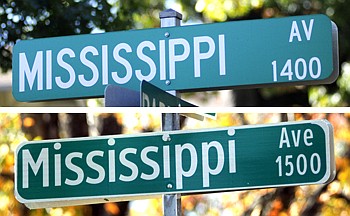Benny Dunn, who turns 64 next month, is a full-fledged member of the baby boomer generation.
So he fully understands the reasons for new federal rules to make the nation's road signs more reflective and readable for aging boomers who are a large chunk of the nation's drivers.
"Between our cataracts and failing vision and all the things we have going on in our lives, we sure don't need any issues trying to read a sign," Dunn said with a laugh.
But in his role as director of the Public Works Department in Dalton, Ga., Dunn isn't thrilled at the local cost of getting the area's signs into compliance.
The new rules from the Federal Highway Administration likely will add $15,000 to $20,000 a year to the city's transportation budget for the next five years, Dunn said.
"It always leaves a bad taste in your mouth when you're mandated by the feds to do something," he said. "But we feel comfortable we're on schedule -- barring a total disaster in funding."
Local and state governments in Tennessee and Georgia already have begun planning for the new rules, issued in 2008.
By next year, state and local governments must submit a management plan for complying with all the requirements to the federal government.
By 2015, regulatory and warning signs -- such as stop signs and speed limit signs -- must meet higher standards of light reflectivity, using costlier "prismatic" materials, transportation officials said. By 2018, all overhead highway and neighborhood street signs must meet those standards, too.
Federal rules allow the changes to be made as old signs wear out and are replaced, to lessen the budget impact, officials said.
Ben Taylor, traffic operations analyst for Chattanooga's Public Works Department, said the new reflective materials cost 75 percent more than earlier materials did.
Deadlines* By 2012: Plan due for complying with new rules.* By 2015: Regulatory signs, warning signs and ground-mounted signs must meet heightened standards of reflectivity.* By 2018: All street signs and overhead highway signs must meet heightened standards of reflectivity.* Ongoing: As existing signs wear out, replacement signs must use an uppercase letter followed by lowercase letters, as opposed to all capital letters. No compliance date specified.Source: Federal Highway Administration, local transportation officials
And governments may have to buy new signs. The rules say signs in all-capital letters are harder to read. Directional signs will have to be changed so only the first letters of the words are in capitals. Stop signs and other command signs still can be all in capitals, officials said.
The lettering change reflects a new understanding of readability, Taylor said.
"Way back when we started making these signs, [the thinking was] all caps is going to get your attention more," he said. But it's "just common sense" that our minds process faster when lettering uses proper capitalization, he said.
Chattanooga is about to take an inventory its signs to come up with a cost estimate for complying with the new law, he said.
State departments of transportation are responsible for overhauling signs on interstate highways and state routes, said officials from those offices in Tennessee and Georgia.
For decades, most Tennessee interstate signs have been made from materials that already meet the new reflectivity requirements, so the transition won't add a significant cost to state spending for road signs, said Mike Tugwell, state traffic engineer for TDOT.
Georgia Department of Transportation officials still are investigating how best to comply with the new rules and come up with cost estimates. The varying sizes of highway signs make estimates difficult, said Jill Goldberg, deputy press secretary for GDOT.
"Those signs are very deceiving. You think, 'That's a nice (little) sign,' then it ends up it's 30 feet by 18 feet," she said. "We are looking into it. We're going to meet whatever those requirements are by the deadline."
In Chattanooga, some signs already have been replaced with the new reflective material and new lettering, Taylor said. A number of neighborhood groups have requested the new signs based on aesthetics, he said.
"People have been calling asking for new street markers in their area. ... They look a lot better. They're nice street signs," he said.
